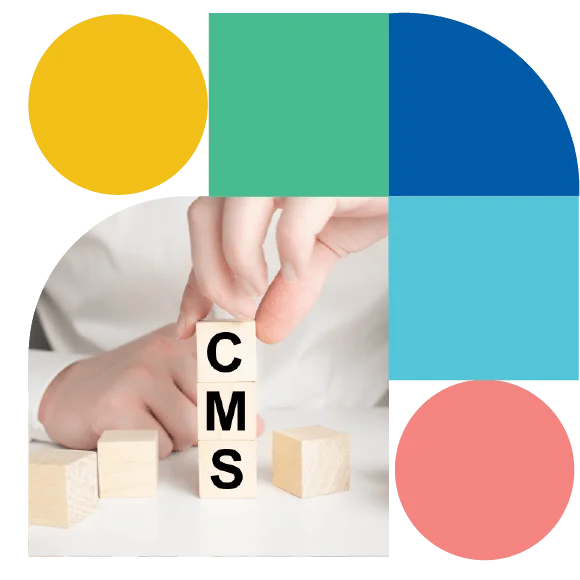9 steps to designing and developing a high-grade web app
Yes, mobile applications are a preferred mode of branding for enterprises. But, the market for web applications has not gone down. Because of its cost-effectiveness and anywhere, anytime access, enterprises engage in web application development.
Now, there are many web app development companies globally. Digiwagon Technologies also provides expert web application development services to expedite your business growth. Our customized web app development proficiency helps meet your business needs.
We follow a rigorous process involving deep research, customized designing, and testing to deliver the best solution to our clients. We would like to share our web application development process with our audience. We want to show the Agile approach our developers take to develop a web app that meets your expectations.
The critical steps of web application designing and development are:

-
Step 1: Identify the purpose of developing a web app
Find out the reason behind the idea of web app development. Understand the objectives you want to achieve with this web app. It’s kind of defining the problem that you intend to solve with a web app.
Such ideation will help you conceptualize the product. It will give a unique direction to your thought process to lead to a feasible idea. It’s better to ask yourself the following questions:
- Who is the audience of this application?
- What are their needs?
- Will this product address their needs?
- What goals will you achieve by building this web app?
Answers to these questions will enhance your vision of the product. You will get a better idea and more clarification on the product.
This step will take time and will involve senior management, the marketing team, designers, developers, technology heads, and business analysts. They will provide the necessary groundwork to support the idea.
-
Step 2: Conduct relevant research
Now, you must conduct research on the market for such web apps. The research is needed to confirm whether a similar app exists in the market or not. If it exists, you need to study the market; if not, find a market for this web app.
If the product already exists, study the existing product. The features. The functionalities. Users’ feedback on it. Also, identify gaps in that product wherein you can provide value and gain a competitive edge. You can either improve the quality, functionality, or user interface.
If the product does not exist, try to find whether people need such a web application. Find what the target audience wants in a web app. Understanding their needs and markets will give you a direction to follow.
Conduct detailed research on audience type, level of internet access, and their interest in such a web app. Identify their pain points, needs, motivations, etc., that the web app will solve. This will be a collaborative process to include a 360-degree perspective.
-
Step 3: Plan the development roadmap
You know the market and are aware of the reason for developing the web app. Now, map out the detailed steps for the actual process. Define each phase, break it into smaller tasks, and prepare the scheduling.
During the development roadmap, also consider planning for the possible risks. Risk planning will help you when these unforeseen situations arise, such as budget shoots up, delays happen, key resources are unavailable, planned frameworks do not work, etc. So, plan for these situations to avoid failure of the entire process.
A project kick-off meeting helps in the planning. Team members can meet each other and know each other’s roles and responsibilities. Discuss the flow of work, reporting structure, tools used, communication channels, and rules, and any other point that requires clarification.
-
Step 4: Prepare the requirements document
Since you have conducted relevant research, you know what other stakeholders want. You know the key features and functionalities that all stakeholders expect in the web app. Make a list of all these because it will help you in the development process.
This requirements specification document includes information on what the web app is and what it can do. It will be a reference document for the developers, testers, and management to compare the product with. So, collect the requirements diligently, write them clearly, and get the necessary approvals.
This document will steer the development process in the right direction and remove any confusion. It will provide a common ground for all stakeholders to agree on; otherwise, too many disagreements may lead to demotivation. So, prepare an accurate requirements specifications document to avoid additional cost, effort, or time.
-
Step 5: Develop wireframes and prototypes
Now, the designer will sketch the web app and give a defined look to it on paper. This sketch will have all the essential elements and components that end-users expect from the application. It will have a navigation panel, images, forms, buttons, branding, texts, and other interactive elements that define the web app.
Based on this design, you must create a prototype, UI sketches, visual instructions, or wireframe. With this, end-users can decide whether the idea of a web app is moving in the right direction. Even the developers will get a clear overview of the product and confidence in their understanding of the web app.
Get approval from potential end-users of your web app. Until they are happy with the product, you need to iterate. Once you get the consent, move to the next stage.
-
Step 6: Select the technology, framework, and platform
With the approval of the wireframe or prototype, you are ready for the development process. Now, you must decide the tools, technologies, frameworks, environment, and platforms to use for the development process.
Consider ones that suit your web app development requirements, not the popular ones. The tools must be such that it is feasible to meet the stated requirements within the budget and timelines. If not, select other suitable alternative tools for developing the web application.
-
Step 7: Build the web application
The development process starts with developing the database. Next comes the frontend and backend, which will run in parallel. Developing the backend of a web application is a daunting task.
The front end will follow the prototype or wireframe that you developed. And the backend will involve supporting technologies to serve the frontend. This will include adding features, modules, classes, libraries, architecture, functionality, etc.
For frontend development, you need to consider animations, icons, security, functionalities, graphics, colour, user experience design, transitions, and API integration. For the backend, you have to focus on the database, API development, session management, etc.
-
Step 8: Test the web application for quality check
You must test the web app during the development process. It is a parallel process that includes testing, making changes, testing again, fixing the bugs, and so on. You need to check a lot of factors before you get the final approval:
- Functionality – Check whether the functionalities of the web application are as per the requirements specification document. Make sure you do not neglect any requirements.
- UI/UX – Test the web app for the user interface and user experience because that is what end-users will interact with.
- Security – Test the web app for its security and safety features to ensure no potential harm or damage from viruses, malware, etc.
- Compatibility – Whatever system, technology, environment, platform, etc., you use, test its compatibility with the web app’s functionality. This is crucial to know if the app functions better with another platform or framework.
- Performance – Check the performance quality of the web app, whether it is achieving the expected quality parameters.
- Regressive – Test whether the web app has any bugs and check if it can perform well, even in the case of many end-users.
Just make sure that your web application is free of bugs and glitches and gives users an excellent experience.
-
Step 9 - Web application launch and hosting
After all this testing, it would be better to launch your app in the beta version. Once the beta version gets approval, you can launch the web app. For launching the app, you need to buy a domain name to host it on a server.
After the launch comes the maintenance part. You will need to update it as and when required, upgrade the version, test it for bugs, and provide customer support.
Conclusion
We all know that the magic lies in the process. A business idea is just an idea until it is turned into a full-grown product. For that, you need to pass through all of the above steps to get the desired web application.
If you are doing it yourself, well and good. But, if you are looking for a third-party vendor with expertise in web application development, we have already introduced ourselves. Digiwagon can help you with robust design solutions to develop your web applications.
In Need of Digital Consultancy?
Get customized digital solutions for that edge in business.
Share Via



